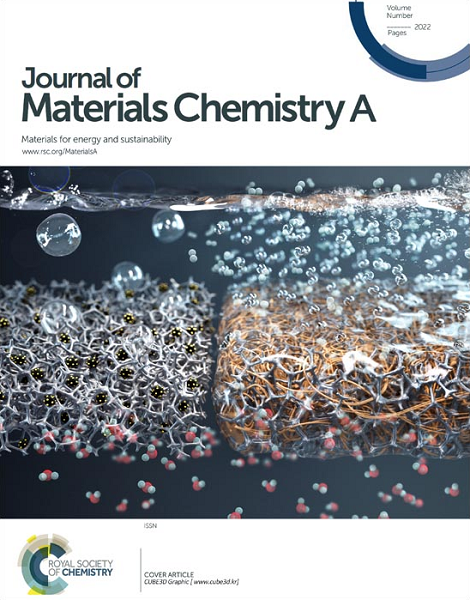CrysGraphFormer: An Equivariant Graph Transformer for Prediction of Lattice Thermal Conductivity with Interpretability
IF 10.7
2区 材料科学
Q1 CHEMISTRY, PHYSICAL
引用次数: 0
Abstract
To address the challenges of high error rates and poor generalization in current deep learning models for predicting lattice thermal conductivity (LTC), we introduce CrysGraphFormer, an innovative equivariant crystal graph Transformer model tailored for this task. The model incorporates an improved multi-head self-attention mechanism and human-designed feature descriptors. Utilizing a message-passing mechanism to update node information, it introduces relative coordinate differences to represent crystal symmetry, avoiding the complex and computationally expensive higher-order representations traditionally used. We constructed a comprehensive dataset containing 5729 LTC data points (300K), including 5477 materials from AFLOW, 112 MAX and MAB phase materials calculated using VASP, and 140 for half-Heusler alloys. Experimental results demonstrate that the CrysGraphFormer model achieves state-of-the-art performance in LTC prediction tasks and excels in predicting fundamental properties. The model offers good interpretability, providing insights from chemical and materials science perspectives. Furthermore, we validated the model's application potential in the field of thermoelectric materials by predicting the LTC of 59 thermoelectric materials and 55 ternary semiconductor materials, with results consistent with DFT calculations. Finally, the uncertainty of CrysGraphFormer was assessed using Monte Carlo Dropout method.CrysGraphFormer:用于预测晶格导热性并具有可解释性的等变图形转换器
为了解决目前用于预测晶格热导率(LTC)的深度学习模型错误率高、泛化能力差的难题,我们引入了 CrysGraphFormer,这是一种专为该任务定制的创新等变晶体图变换器模型。该模型采用了改进的多头自我关注机制和人类设计的特征描述符。它利用信息传递机制更新节点信息,引入相对坐标差来表示晶体对称性,避免了传统上使用的复杂且计算成本高昂的高阶表示方法。我们构建了一个包含 5729 个 LTC 数据点(300K)的综合数据集,其中包括来自 AFLOW 的 5477 种材料、使用 VASP 计算的 112 种 MAX 和 MAB 相材料,以及 140 种半休斯勒合金。实验结果表明,CrysGraphFormer 模型在 LTC 预测任务中实现了最先进的性能,并在预测基本属性方面表现出色。该模型具有良好的可解释性,可从化学和材料科学的角度提供见解。此外,我们通过预测 59 种热电材料和 55 种三元半导体材料的 LTC,验证了该模型在热电材料领域的应用潜力,其结果与 DFT 计算结果一致。最后,我们使用蒙特卡罗剔除法评估了 CrysGraphFormer 的不确定性。
本文章由计算机程序翻译,如有差异,请以英文原文为准。
求助全文
约1分钟内获得全文
求助全文
来源期刊

Journal of Materials Chemistry A
CHEMISTRY, PHYSICAL-ENERGY & FUELS
CiteScore
19.50
自引率
5.00%
发文量
1892
审稿时长
1.5 months
期刊介绍:
The Journal of Materials Chemistry A, B & C covers a wide range of high-quality studies in the field of materials chemistry, with each section focusing on specific applications of the materials studied. Journal of Materials Chemistry A emphasizes applications in energy and sustainability, including topics such as artificial photosynthesis, batteries, and fuel cells. Journal of Materials Chemistry B focuses on applications in biology and medicine, while Journal of Materials Chemistry C covers applications in optical, magnetic, and electronic devices. Example topic areas within the scope of Journal of Materials Chemistry A include catalysis, green/sustainable materials, sensors, and water treatment, among others.
 求助内容:
求助内容: 应助结果提醒方式:
应助结果提醒方式:


